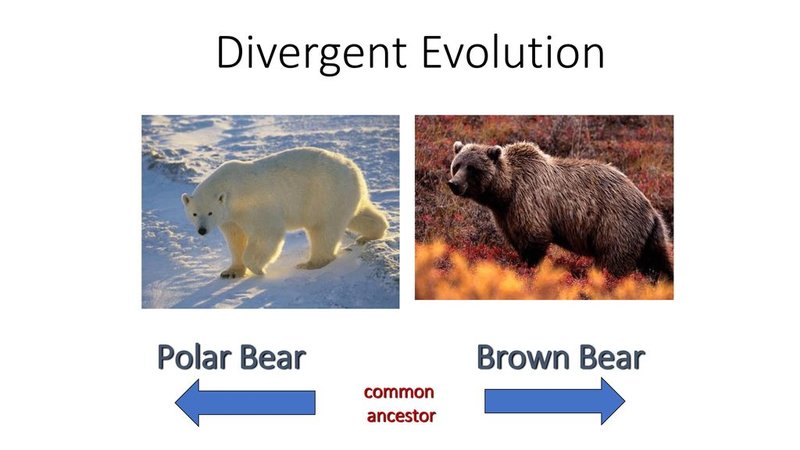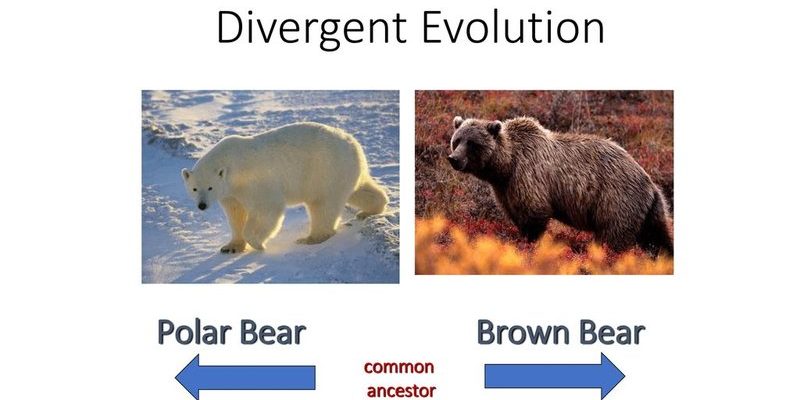
So, how did these bears come to be? Imagine a family tree, branching out over thousands of years, where each twig represents different species that adapted, survived, or went extinct. Polar bears, known scientifically as *Ursus maritimus*, share their lineage with their close relatives, the brown bears. It’s a fascinating tale of survival, change, and the ongoing challenges posed by climate change.
A Brief Introduction to Bear Evolution
Bears belong to the family Ursidae, which has a long and rich evolutionary history. Roughly 38 million years ago, the ancestors of modern bears started to appear. These early bears were quite different from what we see today. They roamed various habitats, including dense forests and open plains.
One particularly interesting point in bear evolution is the divergence of the polar bear from the brown bear lineage. This split occurred around 500,000 to 1 million years ago. As the environment began to shift, some bears started adapting to life in colder climates, leading us to the polar bear we recognize today. These adaptations were not just about physical changes. They involved shifts in behavior, hunting techniques, and even social structures.
You might be wondering how these changes unfolded. Well, it’s all about survival. As glaciers expanded and sea ice formed, those bears that could hunt and thrive in these freezing conditions were the ones that survived to pass on their genes. It’s a classic case of “survival of the fittest.”
The Role of Climate Change in Polar Bear Evolution
Climate change has always played a significant role in shaping the evolution of species, and polar bears are no exception. Over the years, as the Earth’s climate has fluctuated, polar bears have had to adapt. The Ice Ages, for example, were crucial in forming their current habitat.
During these Ice Ages, the polar bear’s ancestors migrated to the Arctic, following the formation of sea ice. This icy expanse became their primary hunting ground, allowing them to thrive on seals and other marine animals. From their thick fur to their large paws designed for walking on snow, every feature of the polar bear tells a story of adaptation to a frigid environment.
However, the modern era brings new challenges. With global temperatures rising rapidly, the sea ice that polar bears depend on is shrinking. This drastic change poses a significant threat to their survival. Polar bears now find themselves in a race against time, struggling to adapt to a rapidly changing world that their ancestors never faced.
Anatomical Adaptations for Arctic Survival
Polar bears are uniquely built for their icy habitats. Their white fur helps them blend into the snowy landscape, making it easier to stalk their prey. Beneath that fur is a thick layer of fat that can measure up to four inches, providing insulation against the frigid temperatures. Think of it as nature’s version of a cozy winter jacket!
But it’s not just their fur and fat that helps them survive. Polar bears have large, powerful limbs and webbed feet designed for swimming. They can swim for long distances, which is essential for hunting seals. In fact, they can dive under the ice to catch their prey, showcasing a remarkable combination of strength and agility.
Here’s the thing: the bears’ adaptations go beyond just physical traits. Their hunting strategies are also a testament to evolution. For instance, they learn to use sea ice as a platform for hunting, waiting patiently near seal breathing holes. This intelligence and adaptability are key reasons polar bears have thrived in such extreme conditions for thousands of years.
Polar Bear Social Behavior and Reproduction
When it comes to social behavior, polar bears are often seen as solitary animals. However, they do interact, especially during mating season or when food is plentiful. During these times, bears may gather in loose groups, showcasing a more social side to their nature.
Reproduction is another critical aspect of their survival. Female polar bears typically give birth every two to four years, depending on food availability and environmental conditions. After a gestation period of about eight months, a mother bear gives birth to one to three cubs in a den dug into the snow. This sheltered space provides protection from the harsh Arctic winter.
Cubs are incredibly vulnerable at birth, weighing less than a pound. They rely entirely on their mother for warmth and nutrition. The mother’s ability to find sufficient food during this critical time is essential for the cubs’ survival. As they grow, they learn valuable skills from their mother, including how to hunt and navigate their icy world.
You might be surprised to learn that polar bear mothers are known for their nurturing behavior. They’ll stay with their cubs for about two years, teaching them how to survive in their challenging environment. This strong bond is crucial, considering the harsh realities of life in the Arctic.
Threats to Polar Bear Survival Today
Despite their remarkable adaptations, polar bears face serious threats today. The most significant challenge is the loss of sea ice due to climate change. As ice melts earlier in the spring and forms later in the fall, polar bears have less time to hunt for food. This has led to decreased body condition and lower reproduction rates, sparking concern among scientists and conservationists.
Pollution is another growing threat. Heavy metals, chemicals, and plastics are making their way into the Arctic ecosystem, impacting the health of polar bears. These contaminants can accumulate in the bears’ fat stores, leading to health issues that can affect their survival and reproduction.
Furthermore, as humans continue to encroach on polar bear habitats, conflicts become more common. Hunting, tourism, and oil drilling can disrupt their natural behaviors and lead to dangerous encounters. While conservation efforts are underway, the fight to protect these magnificent creatures is more essential than ever.
Conservation Efforts and the Future of Polar Bears
Conservation organizations worldwide are working diligently to protect polar bears and their habitats. These efforts include establishing protected areas, promoting sustainable practices, and advocating for policies that address climate change.
One successful example is the creation of marine protected areas, where fishing and other human activities are restricted. These zones help ensure that bears have access to the seals they rely on for food, which is vital for their survival. Education also plays a crucial role in conservation. Teaching communities about polar bears and the effects of climate change can foster a sense of responsibility toward these magnificent animals.
The challenge ahead is significant. Without immediate action to address climate change and protect their habitats, polar bears may face serious declines in population. We must remember that protecting polar bears is about more than just saving a single species; it’s about safeguarding our planet’s health as well.
The evolutionary history of the polar bear is a captivating journey through time, showcasing resilience and adaptability in the face of relentless change. As we learn more about these incredible creatures, we gain insights into the broader impacts of climate change and the urgent need for action.
By understanding how polar bears evolved, we can better appreciate their role in the ecosystem and the pressing challenges they face today. Protecting these majestic animals isn’t just an act of conservation; it’s an investment in our planet’s future. Let’s work together to ensure that the story of the polar bear continues for generations to come, because every branch on that family tree matters.

